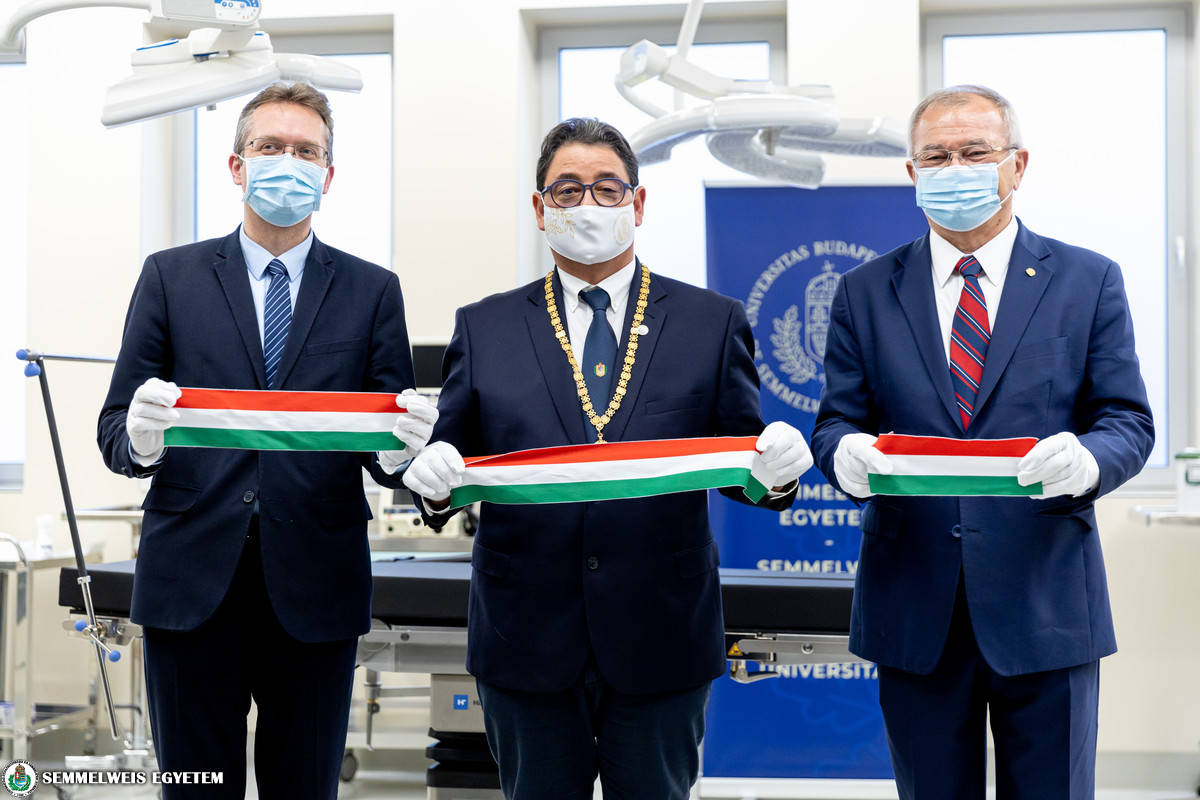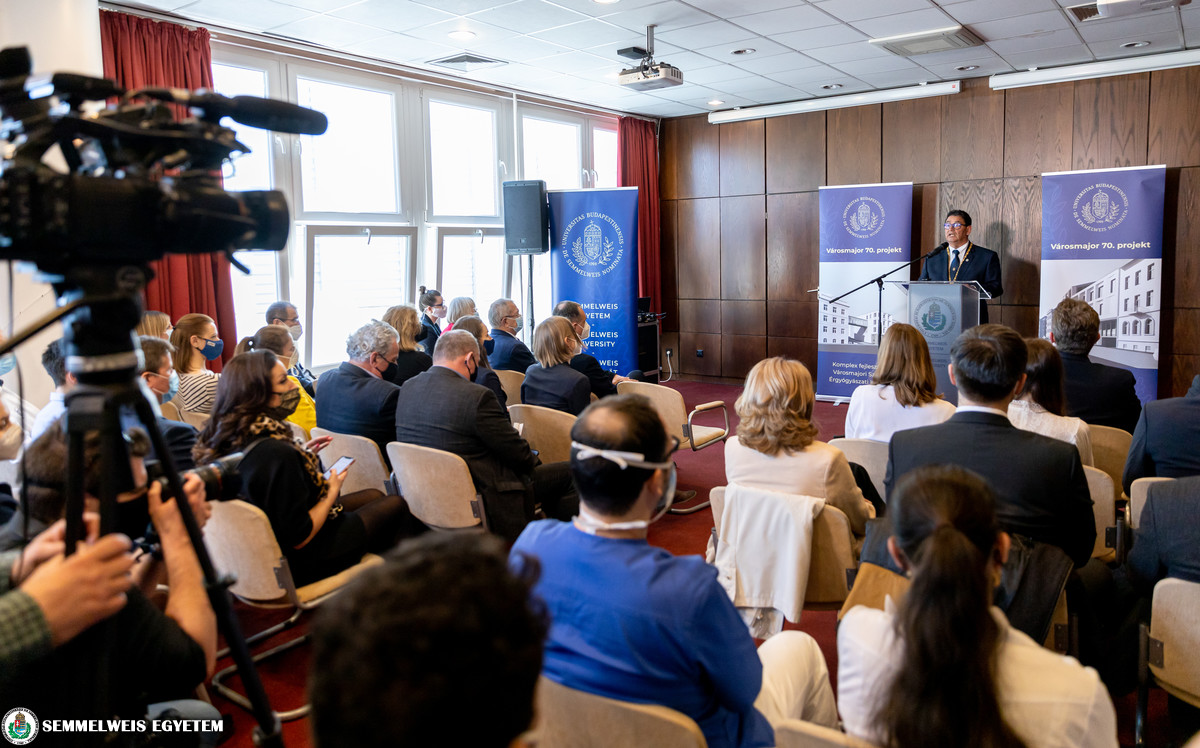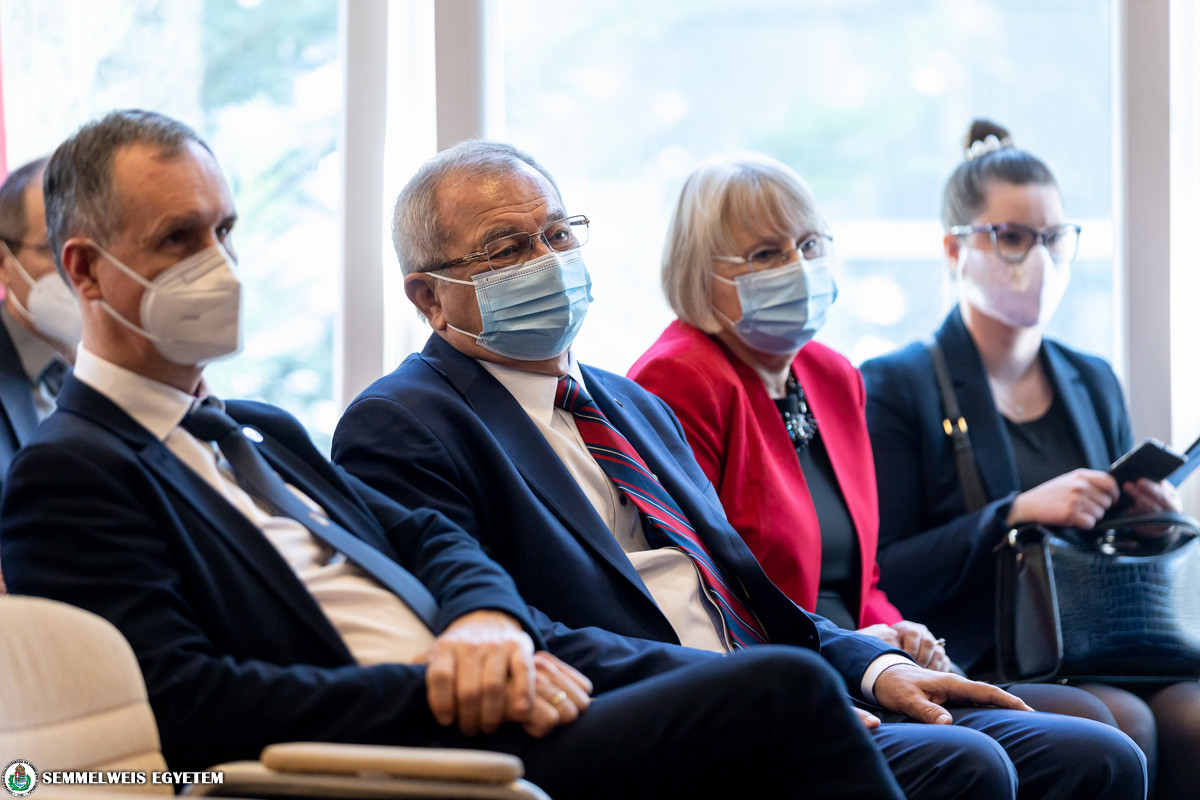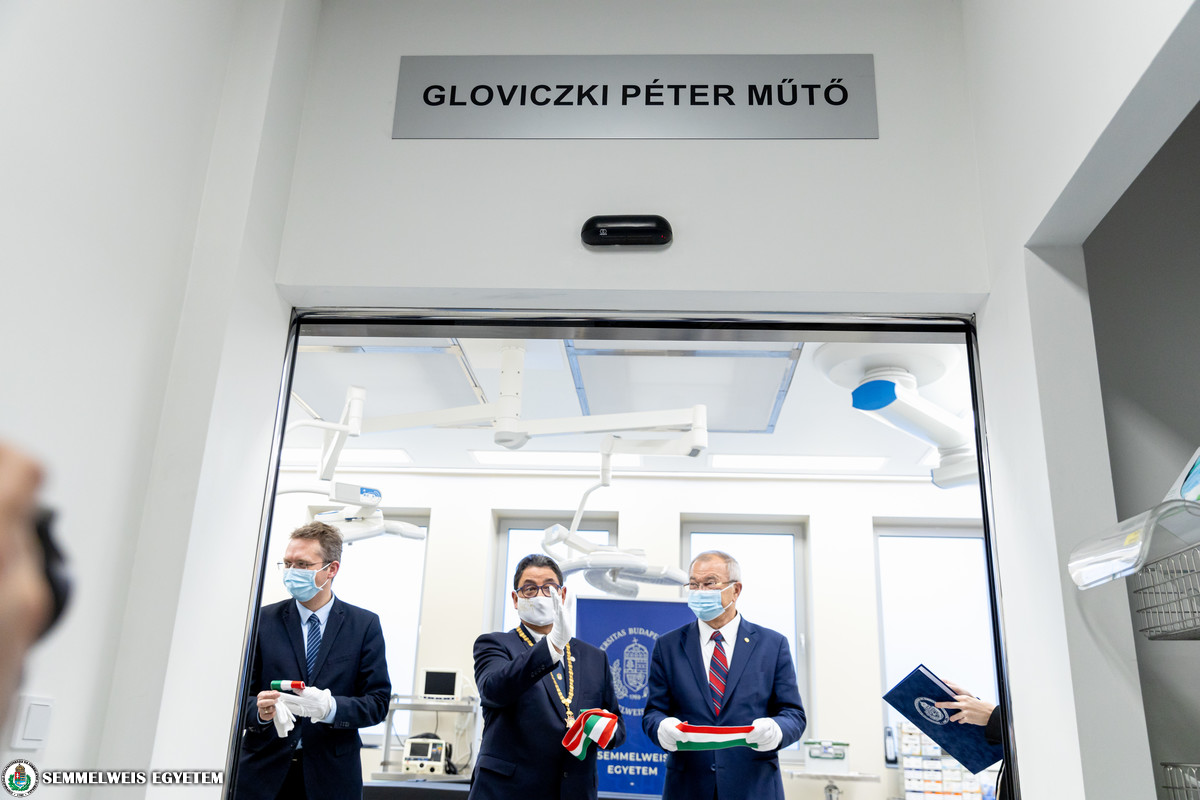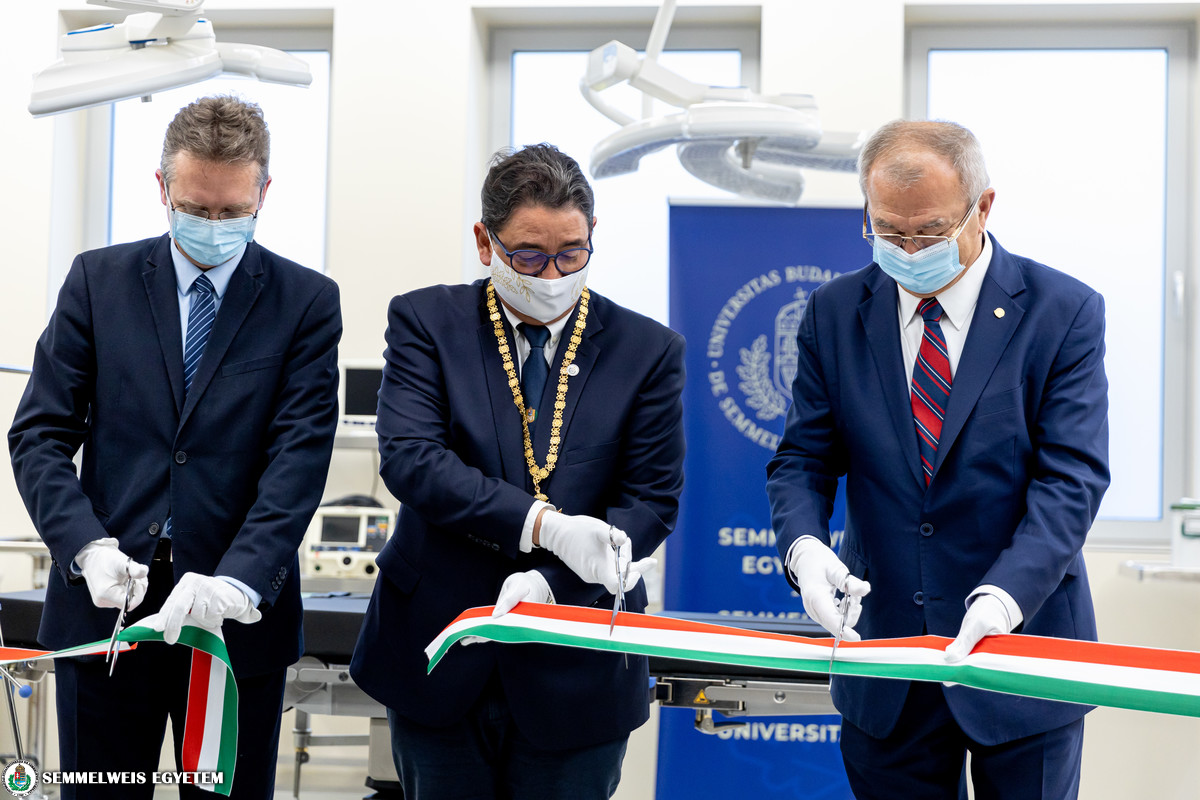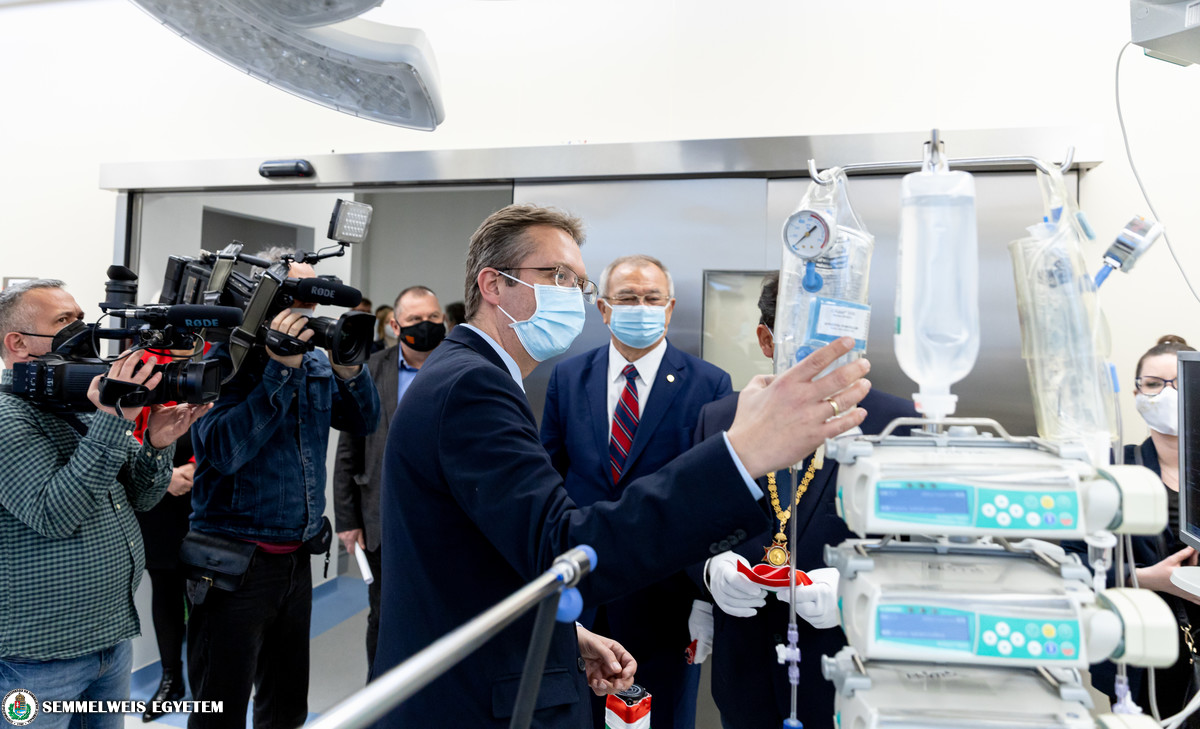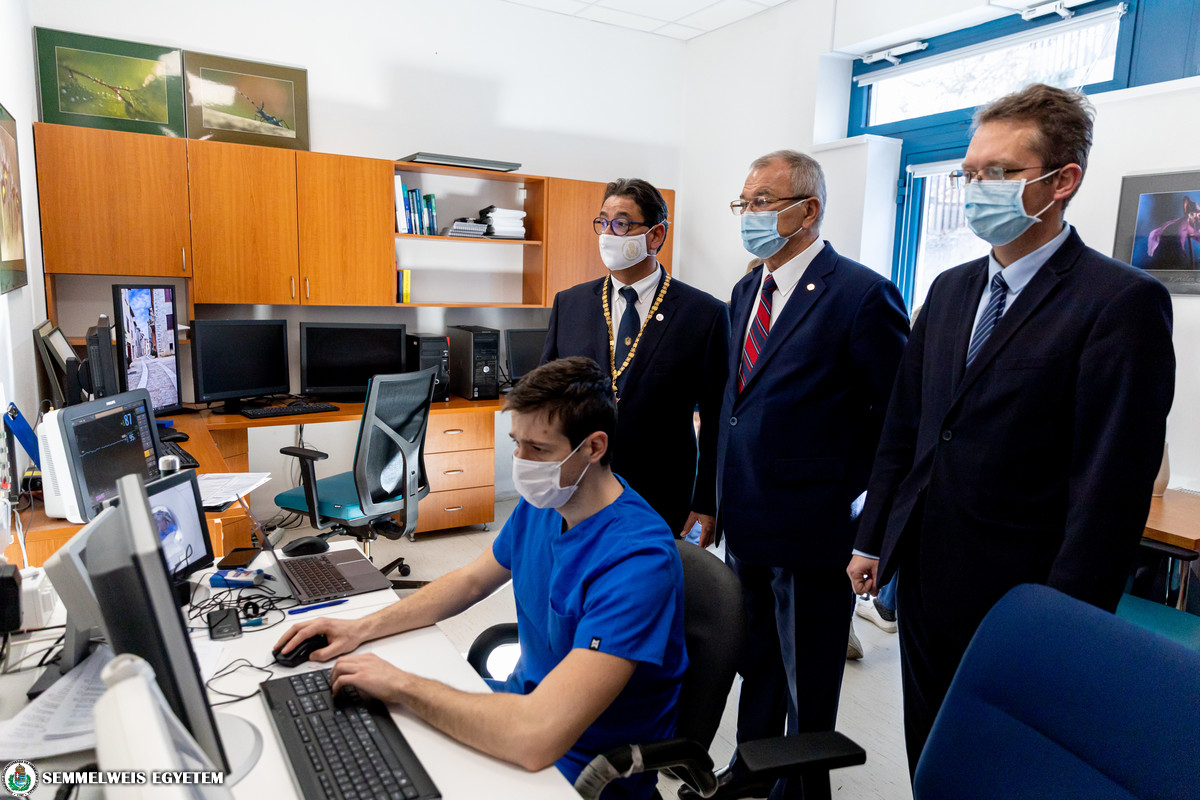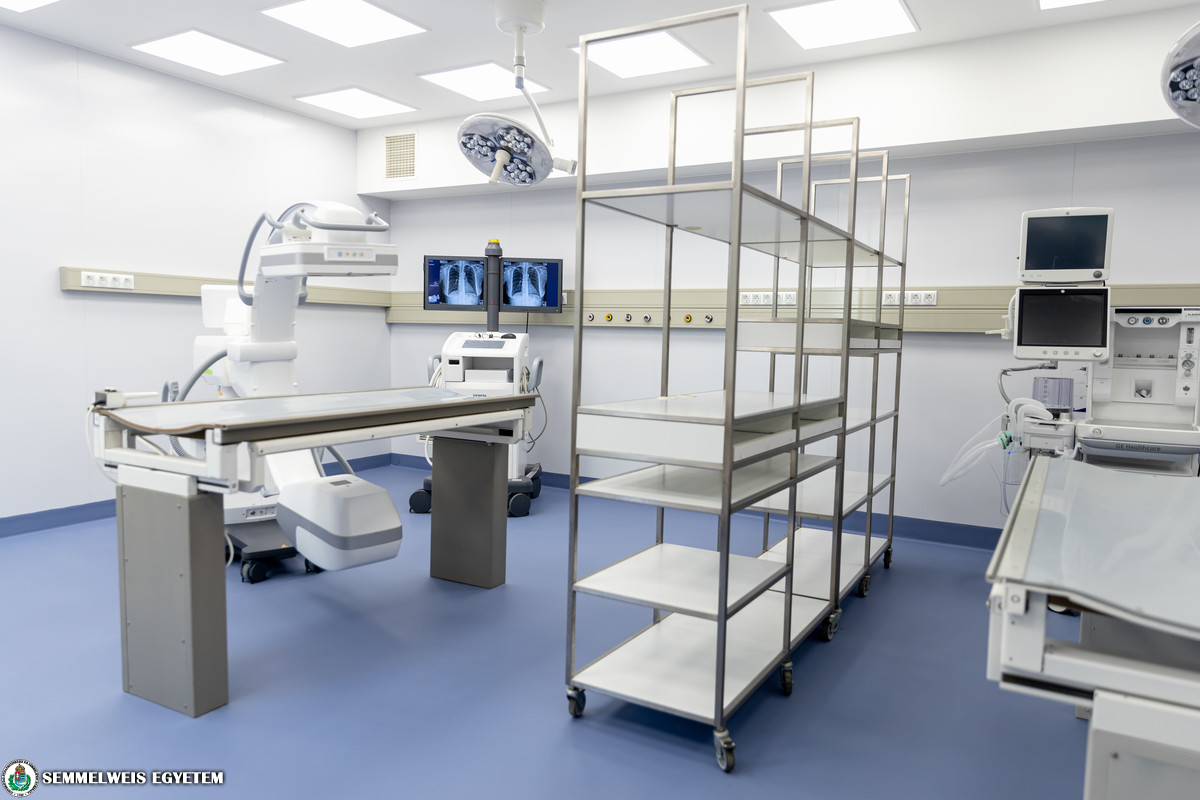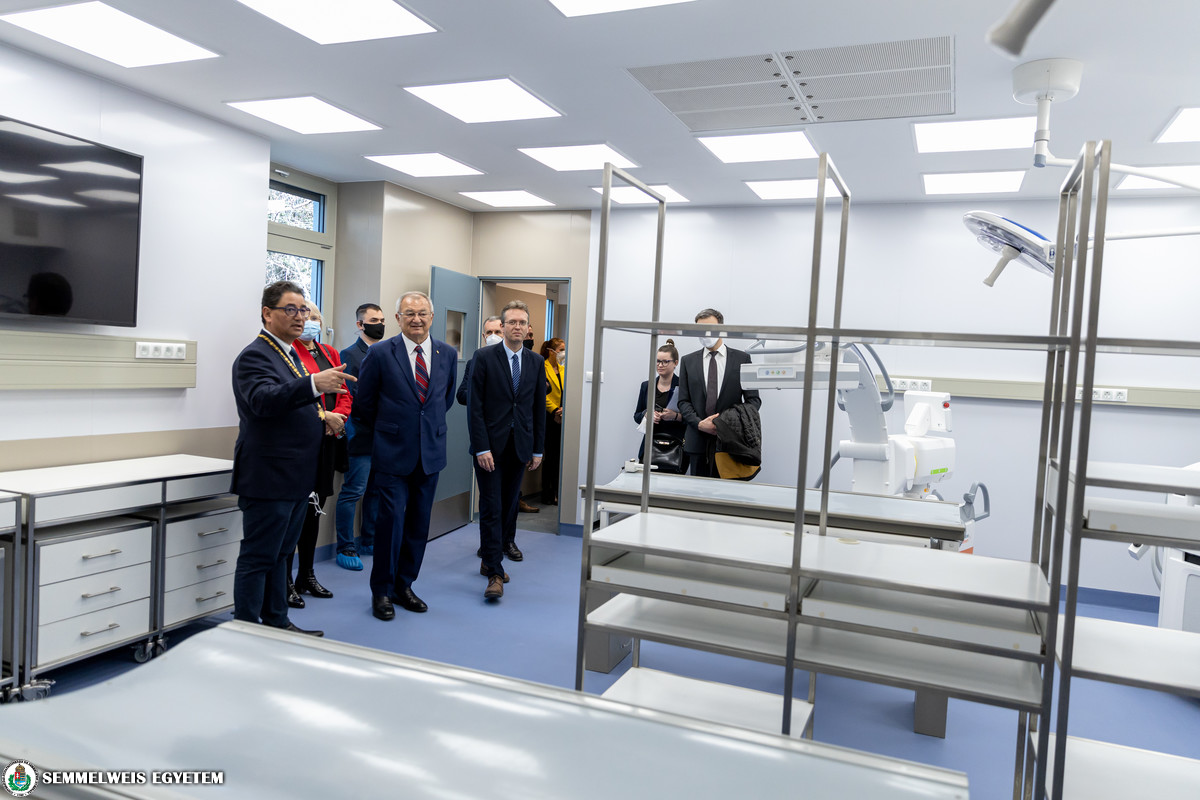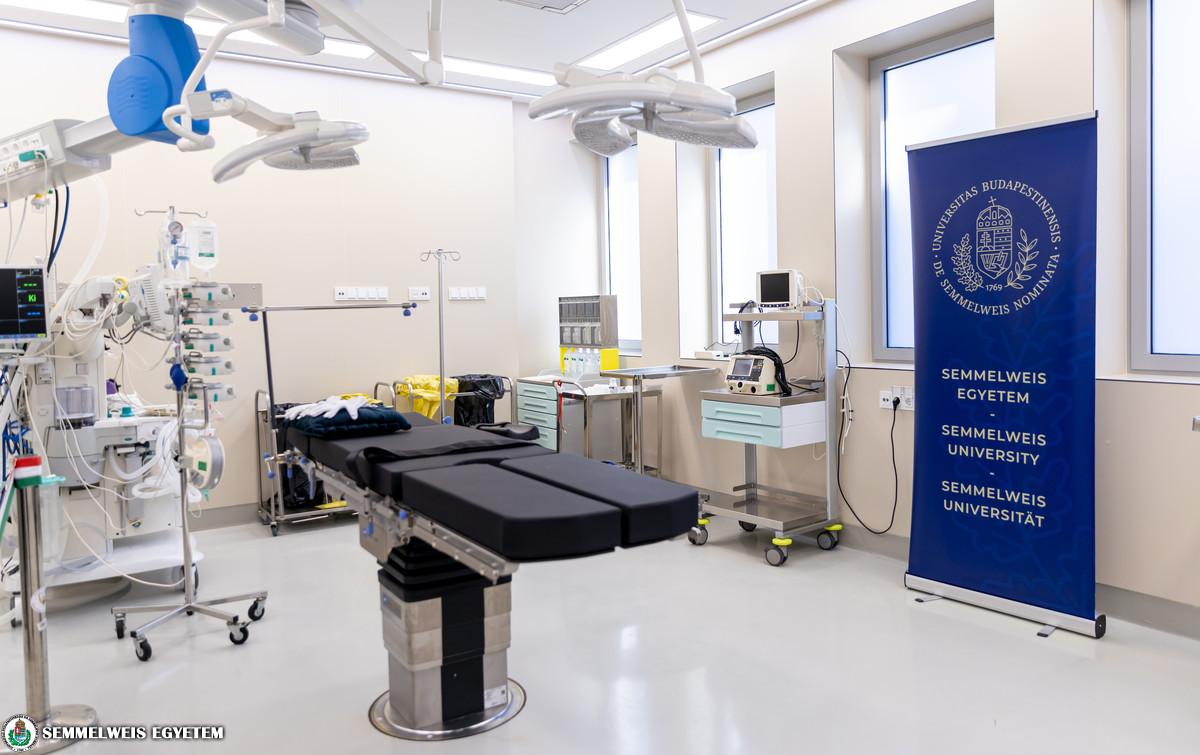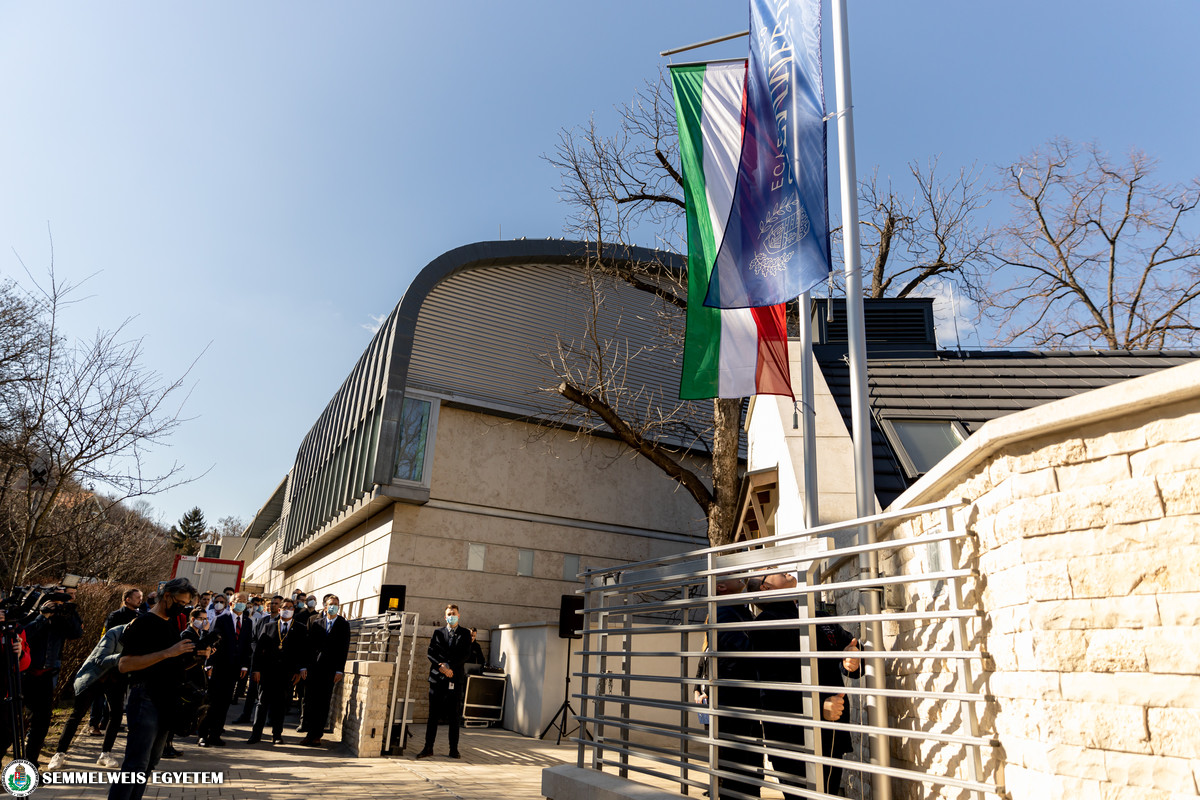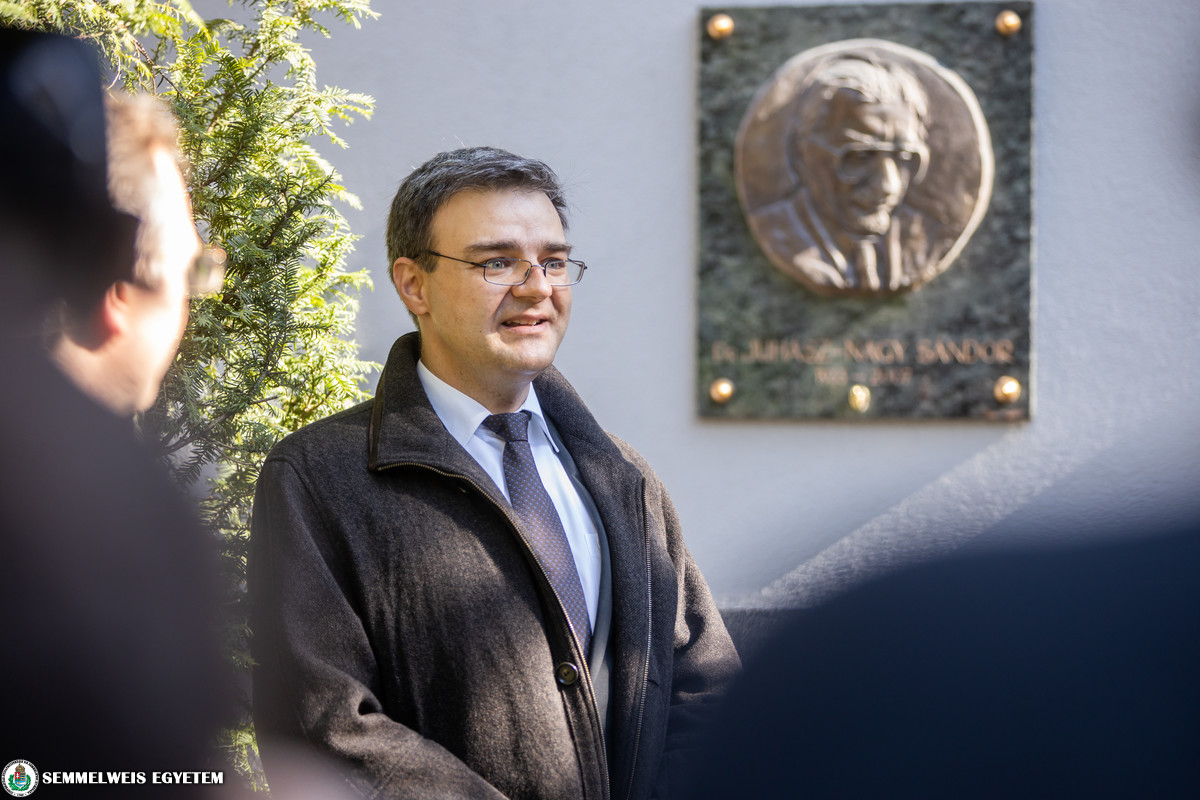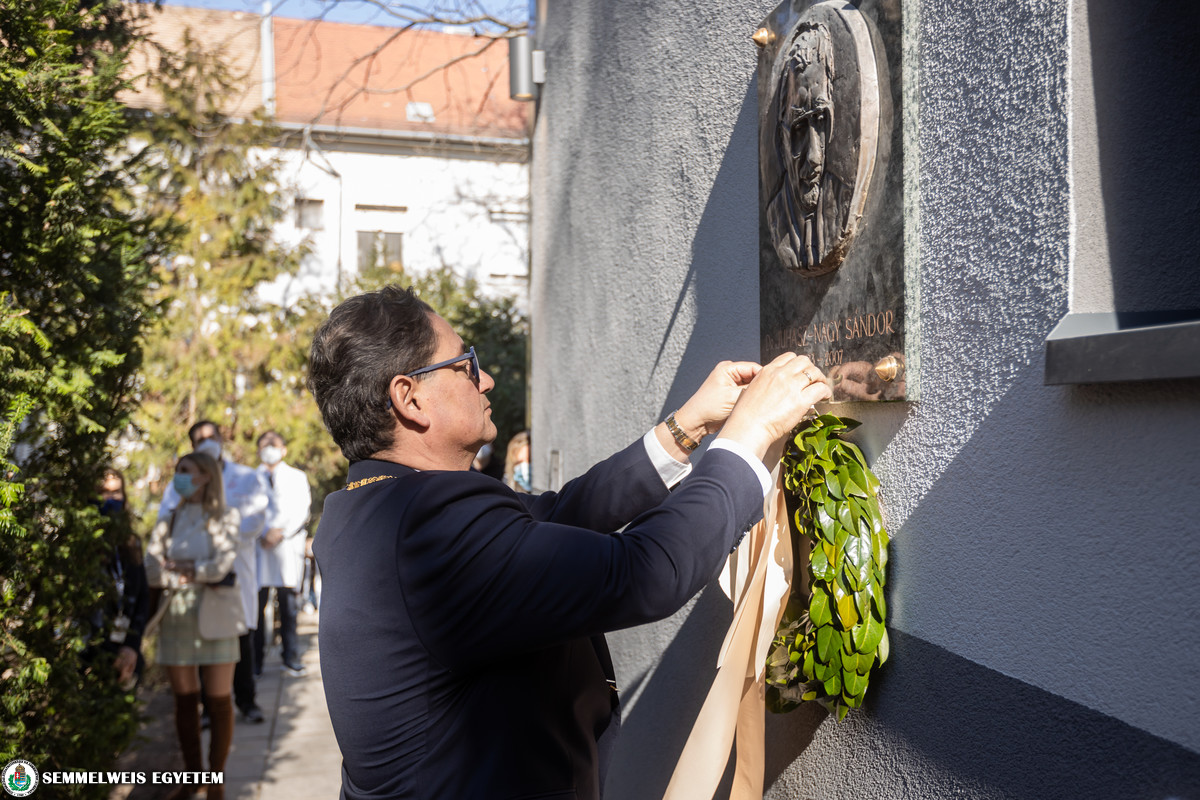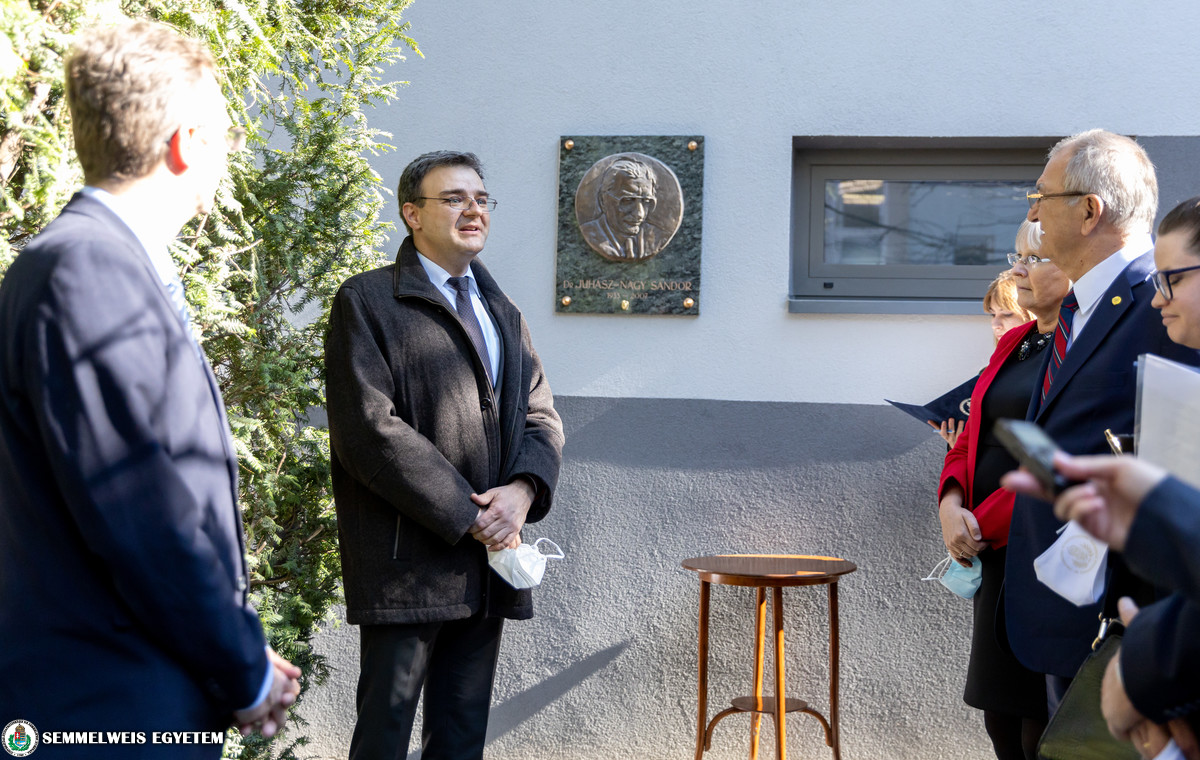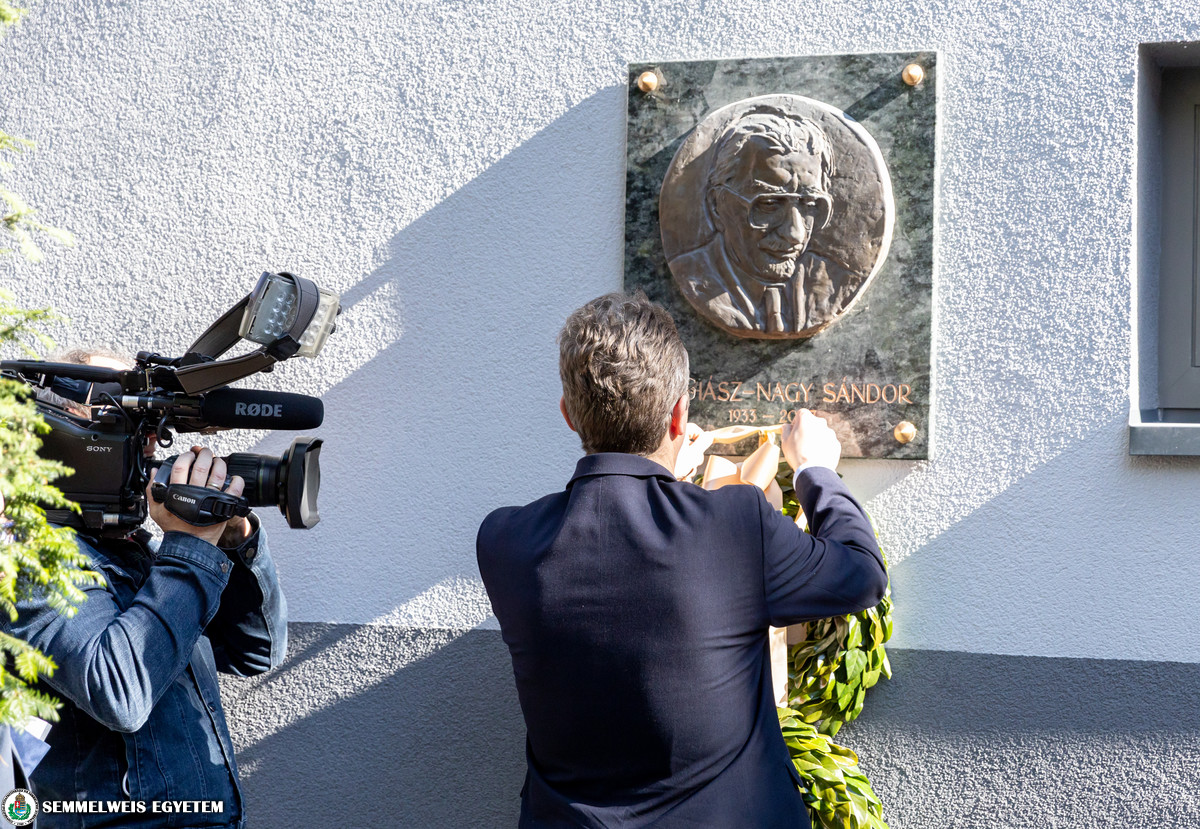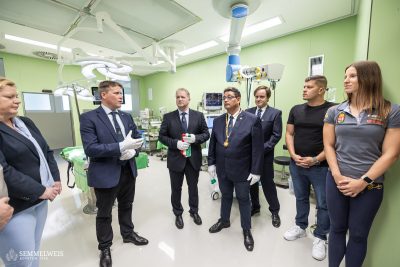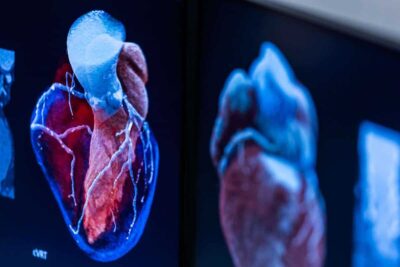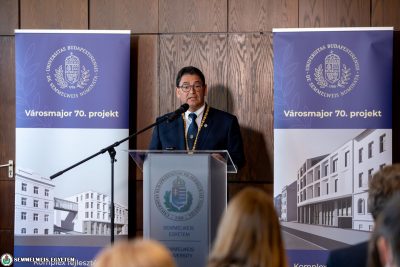 “Semmelweis University and its flagship, the Heart and Vascular Center, have reached a milestone,” said Dr. Béla Merkely, the university’s rector and the clinic’s director, at the event during which three recently completed, significant developments were handed over. “Cardiovascular disease is the most common public health problem and the leading cause of death in Hungary. Therefore, it is very important that we are among the strongest in this discipline on a European level as well,” emphasized the rector, who reminded that Semmelweis University is already the 55th best institution in the world in the field of cardiovascular medicine.
“Semmelweis University and its flagship, the Heart and Vascular Center, have reached a milestone,” said Dr. Béla Merkely, the university’s rector and the clinic’s director, at the event during which three recently completed, significant developments were handed over. “Cardiovascular disease is the most common public health problem and the leading cause of death in Hungary. Therefore, it is very important that we are among the strongest in this discipline on a European level as well,” emphasized the rector, who reminded that Semmelweis University is already the 55th best institution in the world in the field of cardiovascular medicine.
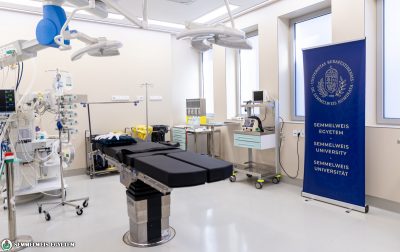 Describing the completed investments, the rector said that the operating theater, named after the internationally renowned vascular surgeon Dr. Péter Gloviczki, will perform reconstructive lymphatic surgery combining microsurgery and vascular surgery, which is currently available in only a few places in Europe. The next phase of the investment in the clinic’s main building at Városmajor utca 68 will also see the renovation of the other operating theaters, the creation of a 10-bed transplant ward and new teaching spaces. The total cost of the project, which will be completed in the autumn with government support, is HUF 3.8 billion, which will be accompanied by a HUF 1.7 billion upgrade of equipment.
Describing the completed investments, the rector said that the operating theater, named after the internationally renowned vascular surgeon Dr. Péter Gloviczki, will perform reconstructive lymphatic surgery combining microsurgery and vascular surgery, which is currently available in only a few places in Europe. The next phase of the investment in the clinic’s main building at Városmajor utca 68 will also see the renovation of the other operating theaters, the creation of a 10-bed transplant ward and new teaching spaces. The total cost of the project, which will be completed in the autumn with government support, is HUF 3.8 billion, which will be accompanied by a HUF 1.7 billion upgrade of equipment.
The Sándor Juhász-Nagy Scientific Research Laboratory has undergone a HUF 1 billion renovation and expansion with the support of the National Heart Program and the Ministry for Innovation and Technology (ITM). The Imaging Diagnostics Department at Határőr út was renovated from an energy point of view thanks to a HUF 700 million KEOP tender, the rector said. As part of the current phase of the project, new medical on-call rooms have also been built on the top level of the main building.
The rector also said that the clinic will be further expanded in the coming years: a new wing will be built on the adjacent plot of land as part of the Városmajor 70 project, which will be connected to the main building by a closed corridor. The new wing will house, among other things, state-of-the-art diagnostic imaging and catheterization equipment, as well as outpatient clinics and student spaces.
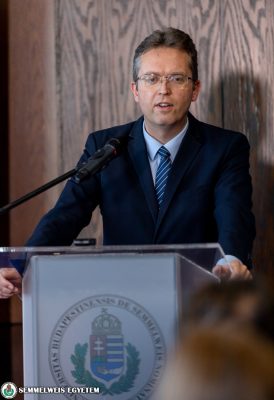 Dr. Balázs Hankó, Deputy State Secretary for Higher Education of the ministry, emphasized at the handover ceremony that today is a day of celebration not only for Semmelweis University and the Heart and Vascular Center, but also for medical and health science education, research and the health sector. The deputy state secretary underlined the role of the government’s program “Change of Gear in Higher Education” in the realization of the developments, which, as he said, has positioned medical and health science education, research and patient care in such a way that today the country is the European leader in terms of higher education investments. In the next few years, HUF 2,700 billion will be available for higher education, and a special fund will be set aside for medical and health research, said Hankó. He also recalled that Hungarian universities are increasingly higher ranked in world rankings, and Semmelweis University is already in the top 1%. “From now on, the task is to use the renewed infrastructure for the benefit of students, teachers, researchers and patients,” he concluded.
Dr. Balázs Hankó, Deputy State Secretary for Higher Education of the ministry, emphasized at the handover ceremony that today is a day of celebration not only for Semmelweis University and the Heart and Vascular Center, but also for medical and health science education, research and the health sector. The deputy state secretary underlined the role of the government’s program “Change of Gear in Higher Education” in the realization of the developments, which, as he said, has positioned medical and health science education, research and patient care in such a way that today the country is the European leader in terms of higher education investments. In the next few years, HUF 2,700 billion will be available for higher education, and a special fund will be set aside for medical and health research, said Hankó. He also recalled that Hungarian universities are increasingly higher ranked in world rankings, and Semmelweis University is already in the top 1%. “From now on, the task is to use the renewed infrastructure for the benefit of students, teachers, researchers and patients,” he concluded.
After the speeches opening the event, the participants had a tour of the Péter Gloviczki Operating Theater, and the ribbon-cutting ceremony was carried out by Dr. Balázs Hankó, Dr. Béla Merkely and Dr. Péter Gloviczki.
Dr. Béla Merkely, praising the namesake of the operating theater, emphasized that he is the most successful Hungarian vascular surgeon whose career started at Semmelweis University, at the Városmajor Clinic. He is one of the Hungarian pioneers of lymphatic surgery. Professor Gloviczki is professor emeritus at the US Mayo Clinic, editor-in-chief of the Journal of Vascular Surgery, an Honorary Doctor of Semmelweis University, recipient of the 2020 Semmelweis Budapest Award, and a member of the Board of Trustees of the National Foundation for Health and Medical Education, which has maintained the university since the model change. “He is the embodiment of dedication, integrity, tireless work, commitment to medicine and humanity,” said the rector.
Dr. Péter Gloviczki recalled in his speech that he worked at the Városmajor clinic for nine years from 1972. He said that he learned from the former director of the clinic, Dr. Lajos Soltész, not only the importance of vascular surgery and the doctor-patient relationship, but also that vascular surgeons treat all diseases of the vascular system, including arteries, acute and chronic venous diseases and the most common lymphatic disease, lymphoedema. It’s an approach he brought with him to the Mayo Clinic, the world’s leading medical institute.
“Microscopic lymphatic surgery has made huge advances in the last 50 years, and this operating theater now offers so-called super-microscopic lymphatic reconstruction,” he said. More than 250 million people in the world suffer from lymphoedema, which affects 15% of those treated for cancer, he pointed out.
“The development will create a lymphatic reconstruction center equipped with the most modern equipment available, where we will be able to perform up to 60-80 procedures per year from autumn 2022, using state-of-the-art lymphatic surgery and imaging systems,” Balázs Mohos, a clinical specialist who will start reconstructive lymphatic surgery at the clinic based on his experience gained during his work in Vienna, told our website. “So far, lymphoedema therapy has only been symptomatic, but reconstructive lymphatic surgery helps to restore lymphatic flow by halting the progression of the disease,” he said, adding that such surgeries can take 4-8 hours. Hungarian patients can currently have this procedure in Vienna, with individual equity-based funding.
The next site of the clinic tour, the Diagnostic Imaging Department, has been renovated thanks to an energy upgrade of more than HUF 700 million, of which HUF 565 million is direct governmental target funding, while the remainder was provided by the university’s own resources. New windows and doors were installed, the building was equipped with state-of-the-art thermal insulation, facade cladding and roofing, and fitted with the latest mechanical equipment.
Dr. Sándor Juhász-Nagy was a Széchenyi Prize-winning professor and a leading cardiovascular researcher of his time. In 1966 he arrived at the then Városmajor Clinic, where József Kudász, the director, entrusted him with the organization of an independent research department. From then on, he worked and conducted research as head of the Városmajor Experimental Research Laboratory. For forty years, until the last year of his life, he investigated the functioning of the heart and blood circulation in this scientific “citadel” he had founded. As a researcher, he was characterized above all by an original vision, an ability to synthesize details and to see the connections between them, in addition to his vast knowledge. As a teacher, he tried to pass on this approach to his students and colleagues.
The event included a flag-raising ceremony to inaugurate the Sándor Juhász-Nagy Scientific Research Laboratory, which underwent a complete architectural, engineering and medical technology renovation and expansion. Dr. Tamás Radovits, associate professor of the Department of Cardiology, said that a world-class scientific laboratory, unique in Central Europe, has been built on 600 square meters, double the size of the previous floor space. The laboratory offers a unique opportunity for the study of cardiovascular diseases, with top-floor workstations and a seminar room providing a dignified environment for researchers and PhD students. Two interventional cardiology workstations in the hemodynamics laboratory provide state-of-the-art equipment for the investigation of cardiovascular diseases.
The in vivo studies are complemented by state-of-the-art molecular biology, genetics and histology laboratories, providing a unique opportunity not only for academic staff, but also as a core facility for national and international academic partners and industry.
A plaque in honor of the research laboratory’s namesake, Dr. Sándor Juhász-Nagy, who passed away in 2007, was unveiled in front of the building. Wreaths were laid by Dr. Balázs Hankó, Dr. Béla Merkely, Dr. Tamás Radovits and Dr. Violetta Kékesi, associate professor.
Pálma Dobozi, Eszter Kovács, Orsolya Dávid
Translation: Tamás Deme
Photo: Bálint Barta, Attila Kovács – Semmelweis University
